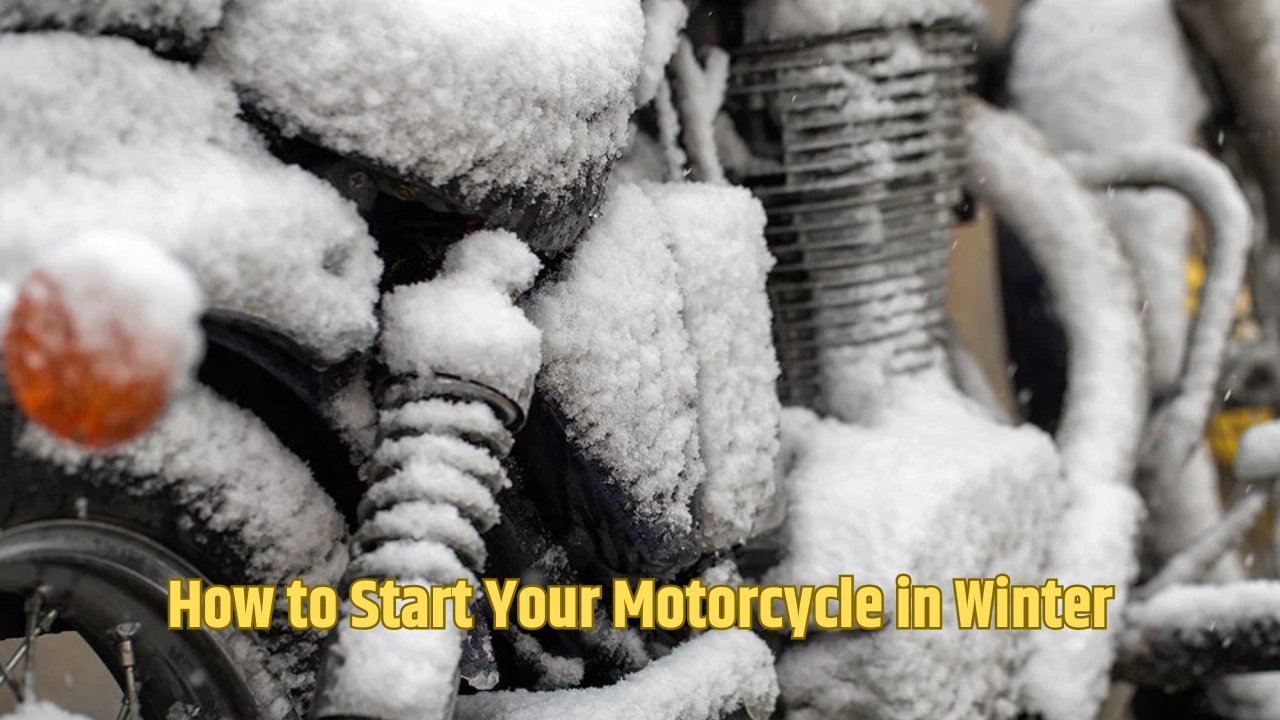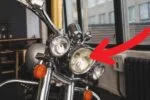Cold weather is a known enemy of motorcycles. Low temperatures not only make riding uncomfortable and potentially dangerous but also affect your bike’s performance. Many riders avoid the road during winter, storing their motorcycles in garages until spring returns. However, if you’re planning to ride after a long winter break, you’ll likely face trouble getting your engine to start. In this article, we explore why motorcycles have difficulty starting in the cold and what practical steps you can take to fix or avoid this issue.
Contents
- 1 Why Is It Hard to Start a Motorcycle in the Cold?
- 2 How to Start a Motorcycle in Cold Weather
- 2.1 1. Keep the Motorcycle in a Warm Area
- 2.2 2. Let the Engine Idle Before Riding
- 2.3 3. Battery Check is Crucial
- 2.4 4. Use the Kick Starter (If Available)
- 2.5 5. Try a Push Start
- 2.6 6. Use the Choke (If Your Bike Has One)
- 2.7 7. Replace Old Fuel
- 2.8 8. Check Engine Oil Viscosity
- 2.9 9. Don’t Let Your Bike Sit Too Long
- 2.10 10. Inspect the Engine for Faults
- 3 Final Thoughts
Why Is It Hard to Start a Motorcycle in the Cold?
When temperatures drop, so does your motorcycle engine’s internal temperature. Engines need to operate within a specific thermal range, and cold weather often pushes them below that limit. Additionally, fuel doesn’t combust as efficiently in the cold, and a weak battery can worsen the situation. If your bike refuses to start, it’s likely due to a combination of these cold-weather effects.
Before riding, check three essential things: your battery, fuel system, and overall engine condition.
How to Start a Motorcycle in Cold Weather
1. Keep the Motorcycle in a Warm Area
If your motorcycle is parked outside or in an unheated shed, it becomes more susceptible to the cold. Try to store it in a garage or an insulated space. No access to a garage? Invest in a good-quality thermal motorcycle cover. This helps maintain the internal temperature, shields the engine from cold drafts, and prevents issues caused by frost or pests.
2. Let the Engine Idle Before Riding
Even if your motorcycle starts on the first try, cold air can cause it to stall shortly after. Allow the engine to idle for 7 to 15 minutes before heading out. This practice warms up the internal fluids and engine components, improving overall performance and reducing the chance of sudden stops on the road.
3. Battery Check is Crucial
Motorcycle batteries often struggle in winter. Since the battery charges only when the bike is running, long periods of inactivity can cause the battery to discharge or freeze. Use a multimeter to check the voltage. If it’s low, you can jump-start it using another bike or a portable jump starter. Keeping the battery on a trickle charger when stored for extended periods also helps.
4. Use the Kick Starter (If Available)
Many modern motorcycles rely solely on electric starters, but some models still come with both electric and kick starters. The kick-start mechanism works manually and doesn’t rely on battery power, making it a great backup in cold weather. Using the kick starter occasionally helps preserve battery life and ensures that your engine cranks even in freezing temperatures.
5. Try a Push Start
If your bike isn’t responding to the starter, a push-start might do the trick. Here’s how: hold the clutch lever, shift into second gear, and push the bike while seated. Once you reach around 5 mph, release the clutch and hit the starter button. If done correctly, the engine should fire up. After it starts, keep it idling to let the engine warm up.
6. Use the Choke (If Your Bike Has One)
Choke systems are designed to enrich the fuel-air mixture, which helps in cold starts. Most carbureted motorcycles have a manual choke, while modern fuel-injected bikes may not. If your bike has a choke, activate it during cold starts and deactivate it after two minutes of engine run time to avoid unnecessary fuel consumption.
7. Replace Old Fuel
Gasoline doesn’t age well, especially in cold weather. If your motorcycle sat idle for weeks, the fuel might have degraded, making it harder for the engine to ignite. Drain the old fuel and refill the tank with fresh gasoline. Using a fuel stabilizer during winter storage can also help maintain fuel quality.
8. Check Engine Oil Viscosity
Cold temperatures can thicken engine oil, increasing internal friction and making it harder for the engine to turn over. Consider switching to a winter-grade synthetic oil that flows easily in low temperatures. These oils are specifically designed to maintain proper viscosity in cold weather.
9. Don’t Let Your Bike Sit Too Long
Extended storage without starting the engine can lead to various problems, including battery drain, rust buildup, degraded oil, and tire cracking. Even if you don’t plan to ride, start your motorcycle every few days and let it idle for several minutes. This keeps the fluids circulating and the engine healthy.
10. Inspect the Engine for Faults
If your motorcycle still won’t start after trying all these steps, a deeper issue might be at play. Start by checking the spark plug for damage or corrosion. Ensure it’s providing a consistent spark. Also, inspect the fuel injection system for clogs or blockages. If you’re unable to diagnose the issue, take the bike to a certified mechanic for a thorough inspection.
Final Thoughts
Winter can be tough on motorcycles, often leading to delayed starts or complete failure to crank. Common reasons include a drained battery, thickened oil, poor fuel quality, or a cold engine. By taking a few preventive steps—like storing your bike in a warm area, idling the engine, and checking essential components—you can minimize cold-weather starting issues.
If all else fails, don’t hesitate to consult a mechanic to identify any underlying mechanical problems. Keeping up with regular maintenance and using the right accessories will help your motorcycle perform well year-round. You can also explore aftermarket upgrades like saddlebags, crash bars, sissy bar bags, and fairings at Viking Bags to enhance both the look and functionality of your bike.




